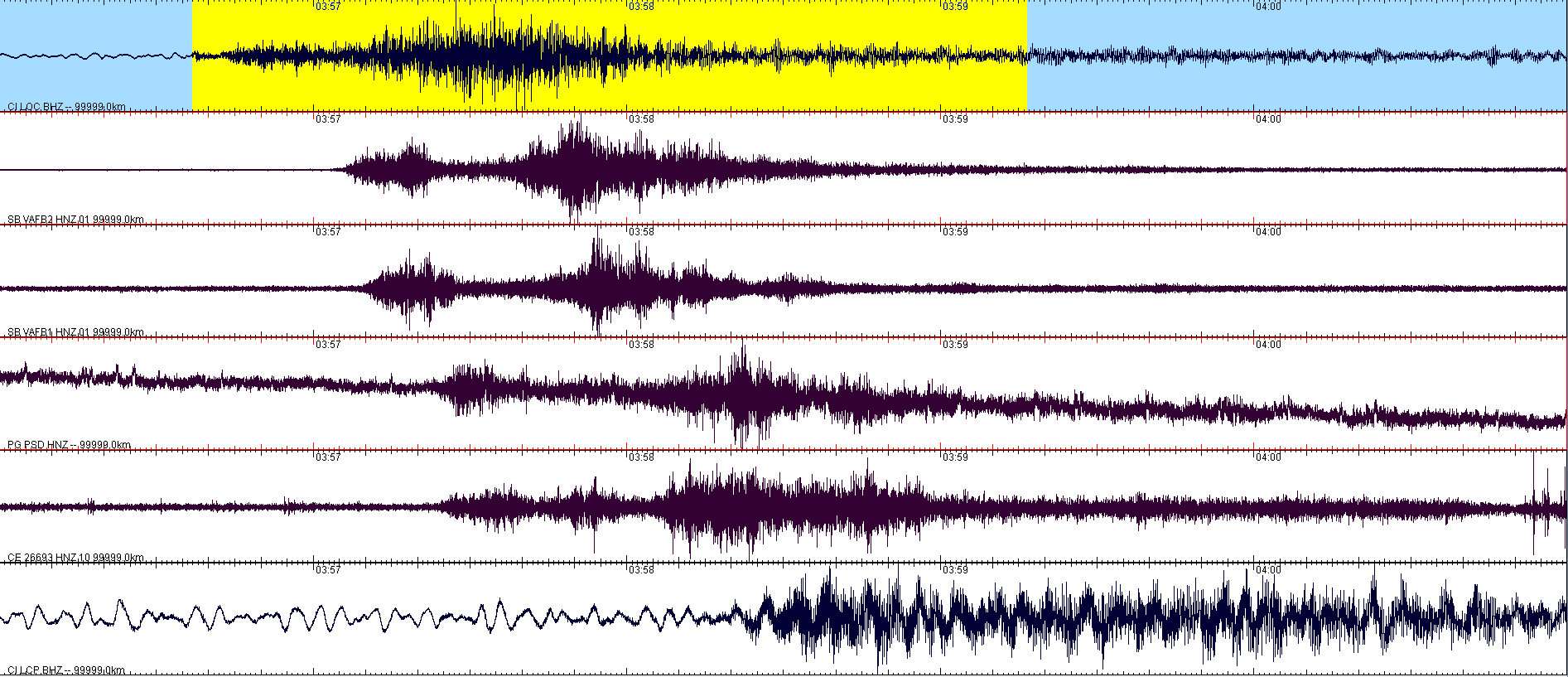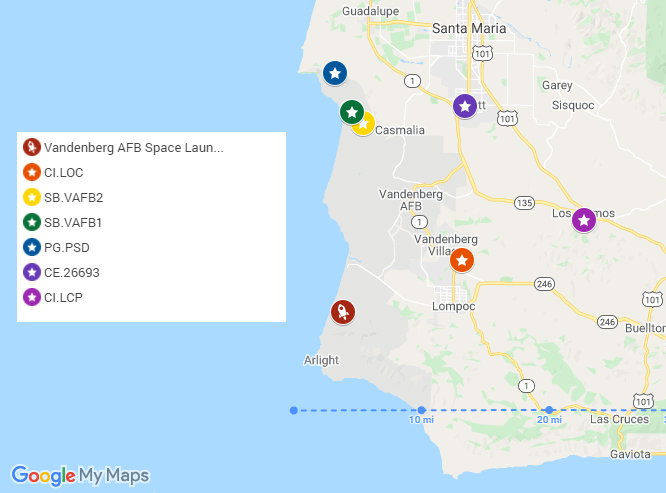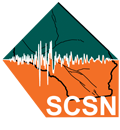Last updated October 3rd, 2021
Here at the SCSN, it is common for our sensors to detect energy that isn’t always caused by an earthquake. Non-seismic energy caused by meteors, sonic booms, quarry blasting, and in the past even nuclear blasts from Nevada, is recorded in our archive. This week we detected what is most likely the energy translated to the ground by the thrusters of a Falcon 9 rocket during take-off. This SpaceX launch was executed from Vandenburg Air Force Base near Santa Maria, California, at 8:56 pm local time on Monday September 13th, with the mission of sending 51 Starlink satellites into orbit. In addition to our own seismic installations in the local area, a number of our partner seismic networks have equipment at the base itself, all of which contributed to the detection of the launch. The seismograms and map below show an image of the waveforms detected as well as the seismometer locations with respect to the launch site.


Along with the static seismometer images, our Live Seismograms Feed detected the launch, which is visible on the channel LCP near Santa Maria.
The energy from the rocket launch is unmistakably different from an earthquake signal: it lacks distinct seismic phases, and differs in both the duration of the energy signal and the speed at which it reaches different sensors in our network. For more information on types of non-seismic events that the SCSN detects, and how we distinguish them from earthquakes, visit our Understanding Waveforms Page.
For more info about this launch and future rocket launches from SpaceX visit their website at https://www.spacex.com/launches/ and view their social media posts below.
Watch Falcon 9 launch Starlink satellites to orbit → https://t.co/bJFjLCzWdK https://t.co/nkoIE3DejS
— SpaceX (@SpaceX) September 14, 2021
Liftoff! pic.twitter.com/ilu3mrKetu
— SpaceX (@SpaceX) September 14, 2021






